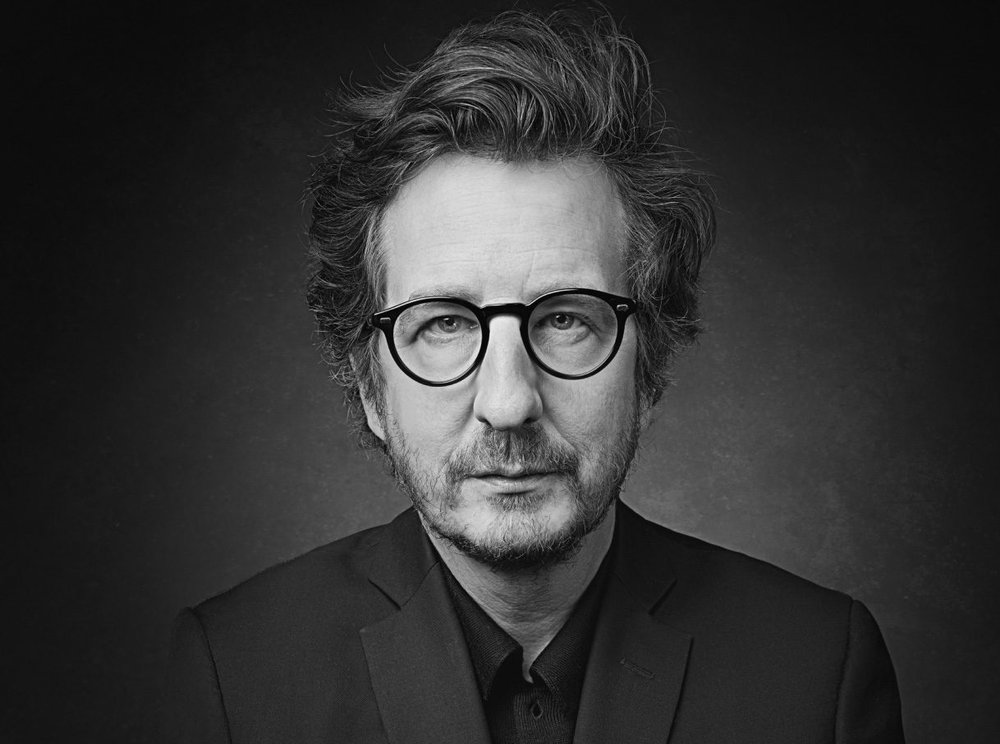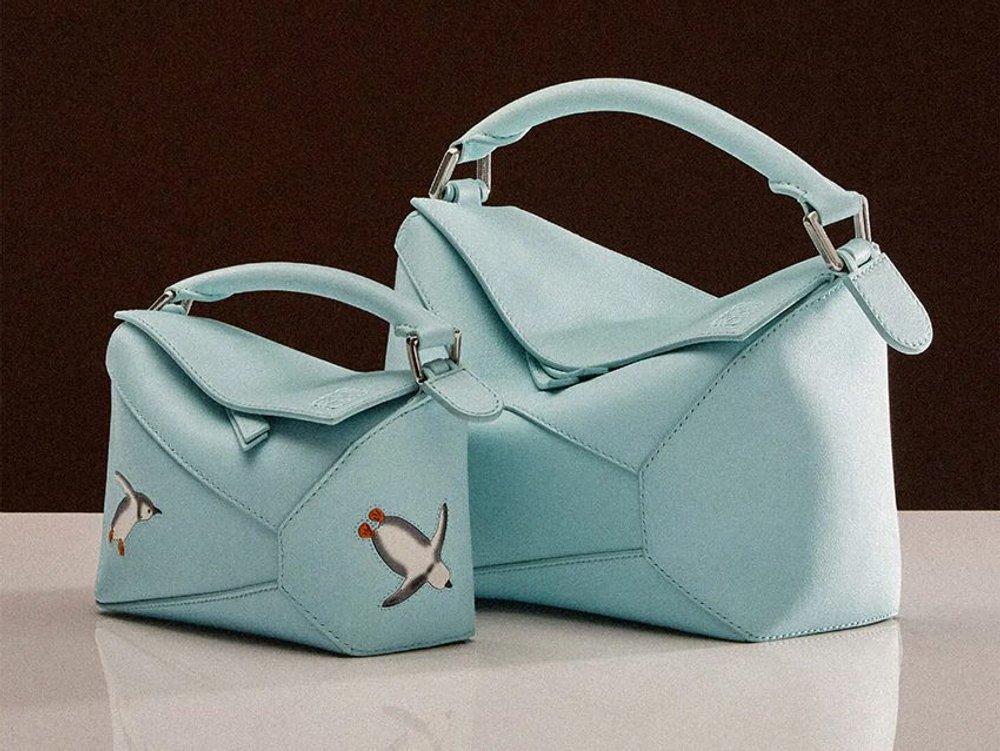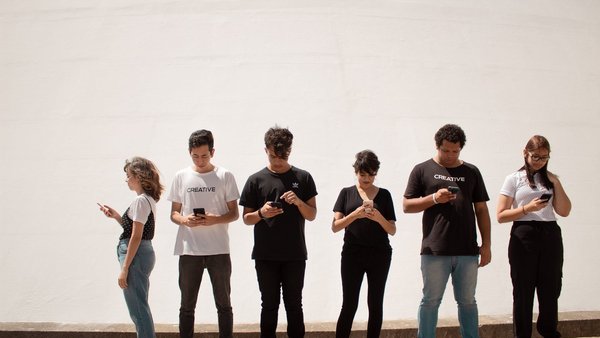‘Gucci was a bit superficial’ /
The CEO of Publicis Groupe’s luxury practice, Charles Georges-Picot, on what it was like leading Cannes Lions’ first ever Luxury & Lifestyle jury, and the importance of connecting deeply
Adam Richmond
/
At Cannes Lions this year, Contagious sat down with Charles Georges-Picot, who presided over the International Festival of Creativity’s inaugural Luxury & Lifestyle awards category.
The CEO of Publicis Groupe’s luxury practice was effusive about the Grand-Prix winning campaign for Loewe, and explained what criteria his jury used to evaluate the work.
Putting aside the glitz of Cannes, Georges-Picot had plenty to say about the broader challenges of luxury marketing, too.
What makes a great luxury marketing campaign — how did you judge the category?
We looked at the longer-term impact and the overall approach. This is what we celebrated. Hermès have been so consistent for their work creatively for so many years. They reinvent themselves all the time, but somehow it’s always the same but it’s always different — very poetic, they’re not using big celebrities. It's about innovation and craft, and it’s extremely subtle, and it is doing extremely well.
When you look at more traditional creative work, you’ll look at the one thing and say, ‘What was the result of that?’, whereas when you look at luxury brands, you need to look at it over a longer time-frame, because the sort of work that we awarded is a good representation of what they do overall. We didn’t judge just on this one thing. We took this one thing in context of the rest because luxury is about time. It takes time to make those products, it takes time to establish a brand. It’s hard to look at the results of one campaign, because it’s not the one campaign that will change things. It’s your dedication, your consistency over time, so that, for me, is the main difference.
Loewe is probably one of the luxury brands now that is performing the best, in an environment that is more challenging than it was even last year. So [the Grand Prix] was a way to celebrate that great way of thinking and celebrate amazing results, and the work with Suna Fujita embodies [it all]. It’s just amazing, to go and find this couple that are doing beautiful ceramics, the way he takes it with so much grace and elegance, and authenticity. He’s really taking it, applying it in a very creative way, blending the sort of traditional craftsmanship with more modern design.
Charles Georges-Picot, Publicis Groupe
You mentioned culture, Gucci was a brand that seemed to have nailed culture, but its sales have taken a dip.
[Alessandro Michele, former creative director at Gucci] did an amazing job at getting Gucci into the culture, but I think that it was done in quite a superficial way. And that’s interesting, versus Loewe, because he did very well to bring the brand back on social media, doing cool films. He was cool, he really got the digital culture, and that really helped, and he also did some good clothing, and that’s his job. But it was a bit superficial. And so it means that when the trends change, or evolve, it’s super hard to keep on riding the wave of the trends.
Culture is deeper. And when you look at brands like Hermès, for example, they are posting some very strong results. Hermès is all about craft and attention to detail and doing things by hand and they are building schools to recruit people. Michele called the right digital trends, but was not deep enough in culture

How does a brand stay authentic and go deep in culture, as opposed to just hopping on trends?
To go deep in culture, you need to be cultured, and I find that sometimes — and it’s also the world that we live in — we tend to be a bit superficial and not to go deep into things. If you really want to be into culture, you need to take time. It’s hard to understand the culture; you need to read, you need to meet people. It’s harder than just to look at TikTok and say, ‘Hey, there’s a new cool trend on Tik Tok, let’s do a video’.
It’s hard work, it takes time, but in the end it ultimately pays off because if you do that very well, then then you are touching people at a much deeper level. For me, it’s the difference between seeing something cool on TikTok or Instagram, that you may forget the next day or minutes later, or reading an amazing book that you’ll think about five years down the road. So culture is a different thing. It’s deeper and so it’s harder. But because it’s deeper, it lasts longer. And luxury brands, their aim is to last a long time, to connect with people deeply and to last a long time

What is the biggest challenge for luxury brands at the minute?
It’s difficult to continue to maintain your status, while being so big and touching so many people. It’s easy to be high in luxury when you have one store in the city and you’re the place to go… when suddenly you have hundreds of stores around the world, and you’re selling billions of euros, it’s more challenging to maintain this very elevated status.
That’s why I believe that culture has a big role to play in that space, because it’s a way to talk to people’s brain rather than their wallet. And that’s the whole of Loewe — there’s more layers. [Loewe’s Jonathan Anderson] will talk to people’s wallets, but he will be more than that for other people. And that’s clever, because suddenly it elevates the brand. So even if they sell more, it means you’re buying something that is of culture and cultured, and not something trendy.
Charles Georges-Picot, Publicis Groupe
So much of luxury is the shopping experience too, how does that fit with the modern digital world?
You’re right, it’s not just the product and the communication, but it’s also the experience that you have with the brand, which is also a challenge, because the more you sell, the more stores you have, how do you make sure that you maintain the right level of service for people? I’m always amazed when I walk down some high streets, [there are] queues of people for big luxury stores. People do that. But then, what happens inside? What’s the experience? How do [staff] make you feel?
That’s a big challenge. And, so scarcity, or maintaining the status is a big one, maintaining the experience, which is part of that, is a big one as well, then there’s another even bigger one, for me that’s coming very fast, is that 75% of luxury buyers in two years’ time will be Gen Z and millennials, people more or less born with a mobile phone in their hands. So the relationship we have with brands and the way they buy and consume is very different. When you walk into a luxury outlet today, you are in that world; when you go online, you don’t always get the same feeling. When you go to any website, you end up with the grid, it’s not the same as being in a shop, which is beautiful.
So how do you crack this new omnichannel for a young generation that has a completely different way of doing things? It means more personalisation, better use of data, and that takes a long time to do; it’s not like doing a campaign or a store. You can redo a store now in a week, doing what I’ve just described, that takes like three years, four years.
How is luxury marketing evolving?
A lot of people are rethinking their approach, which is positive, because you will generate some new, exciting things. And when it’s more difficult, you need to be even better and do an even better job. The brands that are performing the best today, are the ones that are doing the best job at grabbing what happens in today’s culture, at being elevated in everything that they do, and moving at the speed of culture.
Luxury is about how you build something that is going to be there in 100 years. TikTok will be gone — and there’ll be something else for sure — in 20 years, whatever it is. So, if you start to [just follow trends], then you shoot yourself in the foot. I think that too many luxury brands did that and forgot that their number-one objective is to be here in 100 years and more.
[Brands are also asking] ‘How am I going to connect with the new generation and younger people who have a completely different way of living their lives, engaging with brands, buying products, etc?’ Because, you walk into a Dior store and it feels like you are inside Mr Dior’s world; but you go onto the website and is it better than Nike? So that’s going to be a challenge and no one has the answer yet.
Want more Cannes Lions Insights? /
Contagious’ analysts and strategists spend their time at Cannes Lions interviewing jury presidents and attending seminars and press briefings, to find out what’s really going on.
Then, we use our two decades of experience to put those findings into perspective and analyse what they mean for marketing and the marketing industry.
Finally, we condense all those insights and case studies into an informative, insightful and (occasionally) entertaining 50-minute briefing (plus 10 minutes of Q&A) that we deliver to brands and agencies.
Book a Cannes Deconstructed briefing and you’ll learn:
- The strategies that underpin the big winners
- The jury perspective on what it took to win in 2024
- The trends that are shaping the most effective, influential work and what they mean for brands
- The brands and campaigns that are raising the bar for commercial creativity
To find out more, click here.
Want more of the same? /
We don’t just write about best-in-class campaigns, interviews and trends. Our Members also receive access to briefings, online training, webinars, live events and much more.







